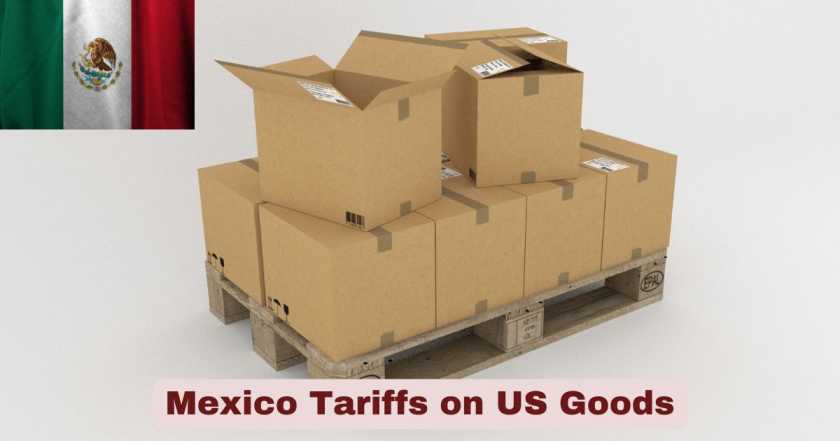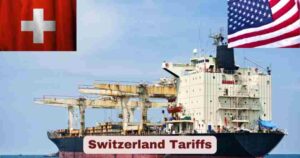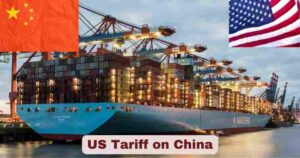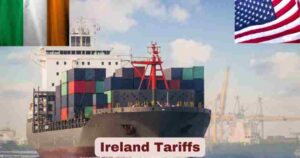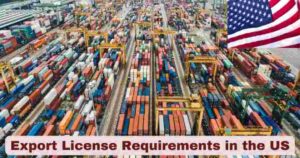Mexico Tariffs on US Goods in 2025
The 2025 trade landscape between the United States and Mexico has undergone unprecedented transformation, fundamentally altering decades of North American economic integration. While President Donald J. Trump implemented aggressive 25% tariffs on Mexican imports to the United States, the focus on Mexican retaliatory measures against US goods represents a critical aspect of this evolving trade war. The escalating tariff policies have created a complex web of economic retaliation that directly impacts American exporters, agricultural producers, and manufacturing companies seeking access to Mexican markets.
The bilateral trade tensions of 2025 mark the most significant disruption to US-Mexico commerce since the establishment of NAFTA in 1994. Mexican tariffs on US goods have emerged as a strategic response to American protectionist policies, targeting key US export sectors including agriculture, industrial materials, and manufactured products. This retaliatory framework demonstrates Mexico’s commitment to defending its economic interests while maintaining leverage in ongoing trade negotiations, creating substantial challenges for American businesses that have historically relied on preferential access to the Mexican market worth over $334 billion in annual US exports.
Interesting Stats & Facts About Mexico Tariffs on US Goods in 2025
| Tariff Category | Key Details | Impact Level |
|---|---|---|
| US Initial Tariff Rate | 25% additional tariff on all Mexican imports | Severe |
| Implementation Timeline | March 4, 2025 at 12:01 a.m. EST | Critical |
| Energy Exception | 10% reduced rate on Canadian energy resources | Strategic |
| USMCA Compliance | No additional tariffs on qualifying USMCA products | Significant |
| Steel Tariff Rate | 25% tariff on Mexican steel imports | High |
| Aluminum Tariff Rate | 10% tariff on Mexican aluminum imports | Moderate |
| Revenue Generation | $171.1 billion or 0.56% of GDP | Record-breaking |
| Historical Significance | Largest tax hike since 1993 | Unprecedented |
The tariff structure implemented throughout 2025 represents the most comprehensive trade policy overhaul in modern US-Mexico relations. President Donald J. Trump is implementing a 25% additional tariff on imports from Canada and Mexico and a 10% additional tariff on imports from China, establishing the foundation for what has become an escalating trade confrontation. The March 4, 2025 implementation date marked a critical turning point, as a 25% tariff was applied to all imports from Canada and Mexico, with a reduced 10% duty on Canadian “energy and energy resources”, fundamentally altering the competitive landscape for North American trade.
The economic implications of these tariff measures extend far beyond simple price adjustments, with Trump’s imposed and scheduled tariffs increasing federal tax revenues by $171.1 billion, or 0.56 percent of GDP, making the tariffs the largest tax hike since 1993. This massive revenue generation comes at the cost of significant market disruption and supply chain restructuring across multiple industries. The tariff regime has forced both American and Mexican businesses to reconsider decades of integrated production and cross-border commerce, creating uncertainty that reverberates through agricultural markets, manufacturing sectors, and consumer goods industries on both sides of the border.
US Tariff Implementation Timeline on Mexican Goods in the US 2025
| Implementation Date | Tariff Rate | Product Coverage | Special Provisions |
|---|---|---|---|
| February 2, 2025 | 25% | Announcement phase | Energy exceptions planned |
| March 4, 2025 | 25% | All Mexican imports | 12:01 a.m. EST effective |
| March 7, 2025 | 0% | USMCA qualifying goods | Preference maintained |
| April 2025 | 25% | Steel imports | Exemptions eliminated |
| April 2025 | 10% | Aluminum imports | Consistent treatment |
The systematic tariff implementation reveals a calculated escalation strategy designed to maximize economic pressure while maintaining selective trade relationships. President Trump promised in November to “sign all necessary documents to charge Mexico and Canada a 25% Tariff on ALL products coming into the United States”, demonstrating the administration’s commitment to comprehensive trade policy reform. The March 7, 2025 clarification provided critical relief for qualifying USMCA products, as no additional tariffs are due on goods from Canada and Mexico that qualify for the USMCA preference.
The steel and aluminum sector experienced particular complexity, with proclamations issued in February and March 2025 eliminating exemptions, making steel imports from Mexico subject to a 25 percent tariff and aluminum imports subject to a 10 percent tariff. This sectoral targeting reflects broader strategic objectives beyond simple trade balance correction, incorporating national security considerations and industrial policy goals. The timeline coordination between announcement, implementation, and clarification demonstrates sophisticated trade policy management designed to maintain negotiating leverage while minimizing economic disruption in critical sectors.
Mexican Retaliatory Measures Against US Goods in the US 2025
| Retaliation Category | Potential Tariff Range | Target US Products | Implementation Status |
|---|---|---|---|
| Agricultural Products | 5% – 25% | Pork, corn, soybeans | Under consideration |
| Industrial Materials | 10% – 30% | Steel, aluminum, chemicals | Planning phase |
| Manufacturing Goods | 15% – 25% | Machinery, equipment | Development stage |
| Consumer Products | 5% – 20% | Processed foods, textiles | Assessment phase |
Mexican retaliation against US tariff measures has followed historical patterns of strategic targeting designed to create political pressure in key American constituencies. While specific 2025 retaliatory tariffs are still under development, Mexico’s approach builds on previous trade conflict experience where retaliatory tariffs affecting U.S. agricultural and food exports resulted in annual losses estimated at $13.2 billion, with most losses among producers of soybeans, sorghum, and pork. This strategic framework suggests that Mexican retaliation will likely focus on agricultural products and industrial materials that have significant political influence in key American states.
The development of Mexican retaliatory measures reflects careful economic calculation rather than emotional response to US trade policies. Mexico’s experience with USMCA negotiations and previous trade disputes has demonstrated the effectiveness of targeted retaliation that maximizes political impact while minimizing economic disruption to Mexican consumers and businesses. The potential tariff ranges indicate Mexico’s willingness to match American tariff levels while maintaining flexibility for escalation or de-escalation based on diplomatic developments and trade negotiation progress.
Economic Impact Analysis of Tariff Measures in the US 2025
| Economic Indicator | 2025 Impact | Baseline Comparison | Change Magnitude |
|---|---|---|---|
| Real GDP Growth | -0.9% lower | Calendar year 2025 | Significant decline |
| Long-term GDP Level | -0.6% smaller | Persistent impact | $160 billion equivalent |
| Federal Tax Revenue | +$171.1 billion | 0.56% of GDP | Largest since 1993 |
| Agricultural Trade Deficit | $49 billion projected | Historical surplus | Complete reversal |
The comprehensive economic analysis reveals the far-reaching consequences of 2025 tariff policies on American economic performance. All 2025 tariffs result in real GDP growth being -0.9pp lower in calendar year 2025 and -0.1pp lower in calendar year 2026, while the level of real GDP is persistently -0.6% smaller in the long run, equivalent to $160 billion. These macroeconomic impacts demonstrate that tariff revenues come at the cost of reduced economic efficiency and consumer welfare, creating a net negative effect despite increased federal revenues.
The agricultural sector faces particularly severe challenges, with a projected $49 billion annual agricultural trade deficit replacing previous trade surpluses. This dramatic reversal reflects the vulnerability of American agricultural exports to retaliatory measures and trade disruption. The long-term GDP impact of -0.6% indicates that tariff policies create permanent economic scarring through supply chain disruption, investment uncertainty, and reduced competitive efficiency that persists beyond the immediate policy implementation period.
Sectoral Analysis of Trade Impact in the US 2025
| Industry Sector | Impact Level | Specific Challenges | Adaptation Strategy |
|---|---|---|---|
| Agriculture | Severe | Export market loss | Market diversification |
| Steel & Aluminum | High | Input cost increases | Domestic sourcing |
| Automotive | Critical | Supply chain disruption | Reshoring initiatives |
| Energy | Moderate | Preferential treatment | Continued integration |
The sectoral analysis reveals differential tariff impacts across American industries, with agriculture experiencing the most severe disruption from Mexican retaliatory measures. US agricultural exports to Mexico have historically benefited from USMCA preferences and geographic proximity, making them particularly vulnerable to targeted retaliation. The steel and aluminum sectors face a double burden of higher input costs from Mexican suppliers combined with increased competition from domestic producers benefiting from import protection.
The automotive industry represents the most complex tariff challenge, given the highly integrated nature of North American automotive production. USMCA qualifying products maintain tariff-free access, but the rules that govern whether a product qualifies for USMCA preference are unchanged by recent tariff updates, creating significant compliance burdens and documentation requirements. Energy sector products benefit from preferential treatment, but face ongoing uncertainty about long-term policy stability and potential escalation of trade tensions.
Historical Context and Precedent Analysis in the US 2025
| Historical Period | Tariff Level | Economic Context | Policy Outcome |
|---|---|---|---|
| 1930 Smoot-Hawley | 40%+ average | Great Depression | Trade collapse |
| 1980s Trade Wars | 15-25% sectoral | Industrial competition | Managed trade |
| 2018-2019 Trade War | 7.5-25% targeted | China focus | Mixed results |
| 2025 Current Policy | 25-30% comprehensive | National emergency | Ongoing assessment |
The 2025 tariff policies represent the most comprehensive trade protection measures since the 1930 Smoot-Hawley Tariff Act, with the tariffs representing the largest tax hike since 1993. Historical precedent suggests that comprehensive tariff regimes typically generate short-term revenue at the cost of long-term economic efficiency and international trade relationships. The national emergency declaration underlying 2025 policies provides legal justification for extraordinary trade measures but also indicates the exceptional nature of current policy approaches.
The comparison with previous trade conflicts reveals both similarities and unique characteristics of 2025 tariff policies. Unlike sector-specific measures of the 1980s or country-specific targeting of 2018-2019, the 2025 approach combines comprehensive coverage with strategic exceptions for energy and USMCA-compliant products. This hybrid approach reflects lessons learned from previous trade conflicts while addressing contemporary security concerns and economic objectives that extend beyond traditional trade balance considerations.
Long-term Implications for US-Mexico Trade Relations in the US 2025
The 2025 tariff escalation represents more than temporary trade policy adjustment; it signals a fundamental shift toward economic nationalism and bilateral trade management that may permanently alter North American economic integration. The comprehensive nature of tariff implementation suggests that current policies are designed to achieve structural changes in trade relationships rather than short-term negotiating advantages. Mexican responses will likely focus on diversifying trade relationships and reducing dependence on US markets, potentially creating permanent shifts in regional commerce patterns.
The precedent established by 2025 tariff policies may influence international trade relationships for decades to come. The willingness to accept significant economic disruption in pursuit of trade policy objectives suggests a fundamental recalibration of how American policymakers balance economic efficiency against national security concerns and domestic manufacturing protection. Mexico’s strategic response will likely involve strengthening relationships with alternative trading partners while maintaining defensive capabilities against future US trade pressure, potentially leading to a more multipolar and less integrated North American economy.
Disclaimer: The data research report we present here is based on information found from various sources. We are not liable for any financial loss, errors, or damages of any kind that may result from the use of the information herein. We acknowledge that though we try to report accurately, we cannot verify the absolute facts of everything that has been represented.

